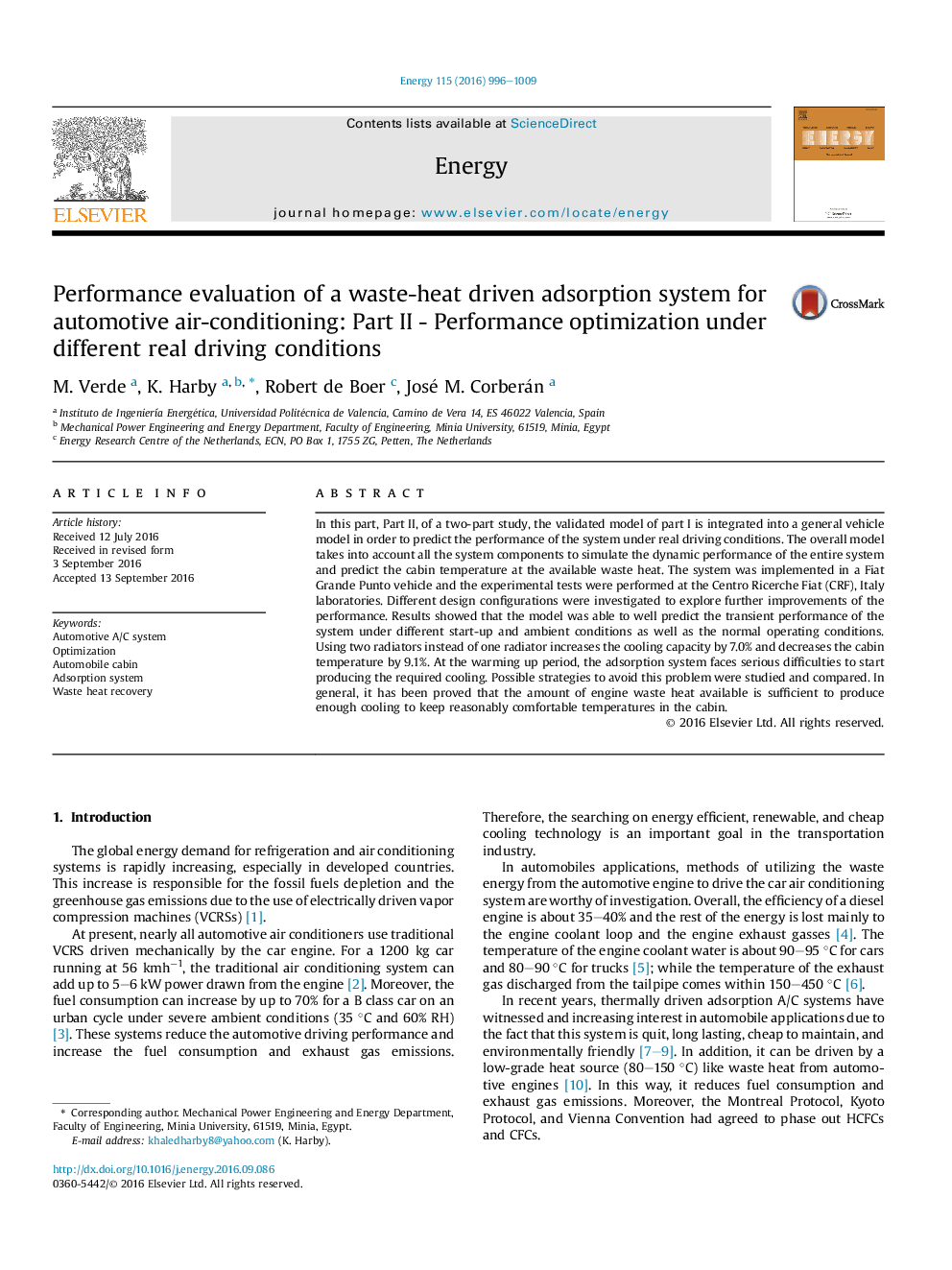| Article ID | Journal | Published Year | Pages | File Type |
|---|---|---|---|---|
| 5476737 | Energy | 2016 | 14 Pages |
Abstract
In this part, Part II, of a two-part study, the validated model of part I is integrated into a general vehicle model in order to predict the performance of the system under real driving conditions. The overall model takes into account all the system components to simulate the dynamic performance of the entire system and predict the cabin temperature at the available waste heat. The system was implemented in a Fiat Grande Punto vehicle and the experimental tests were performed at the Centro Ricerche Fiat (CRF), Italy laboratories. Different design configurations were investigated to explore further improvements of the performance. Results showed that the model was able to well predict the transient performance of the system under different start-up and ambient conditions as well as the normal operating conditions. Using two radiators instead of one radiator increases the cooling capacity by 7.0% and decreases the cabin temperature by 9.1%. At the warming up period, the adsorption system faces serious difficulties to start producing the required cooling. Possible strategies to avoid this problem were studied and compared. In general, it has been proved that the amount of engine waste heat available is sufficient to produce enough cooling to keep reasonably comfortable temperatures in the cabin.
Related Topics
Physical Sciences and Engineering
Energy
Energy (General)
Authors
M. Verde, K. Harby, Robert de Boer, José M. Corberán,
